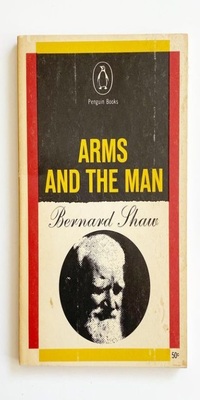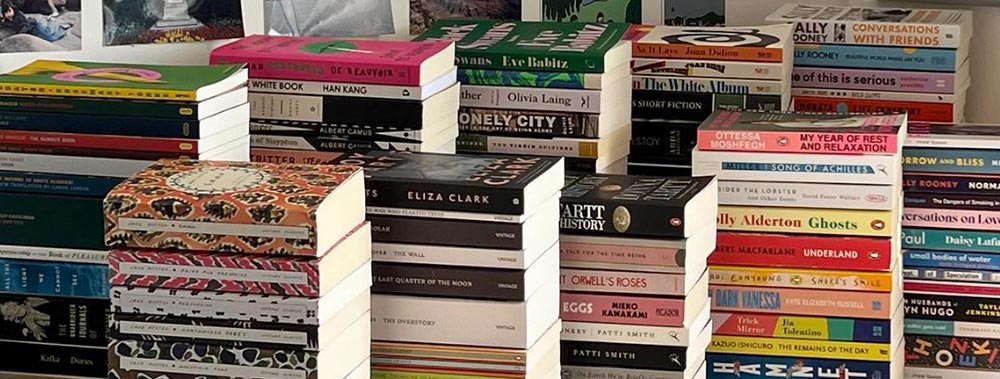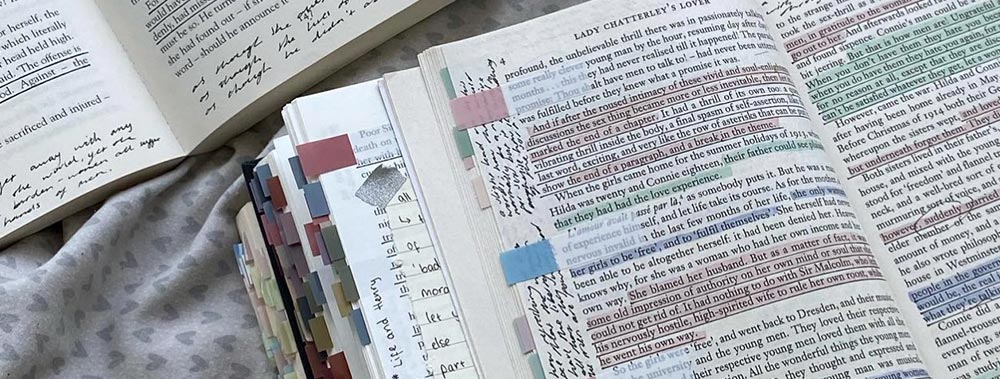Arms and the Man: Summary, Plot, Characters, Literary Analysis & More
“Arms and the Man,” a comedic play by George Bernard Shaw, was first published in 1894.
Regarded as one of Shaw’s finest achievements, this play provides a satirical exploration of societal ideals and the absurdity of war during the Serbo-Bulgarian conflict.
Set against the backdrop of the upper-class Petkoff family and the pragmatic Captain Bluntschli, the narrative unfolds with Raina Petkoff’s transformation from an idealistic dreamer to a more pragmatic thinker.
Through Raina’s journey, Shaw examines themes of social class, gender roles, and the clash between romanticism and reality.

A comedic clash of romance and war in 'Arms and the Man.' Shaw's witty satire explores love, societal ideals, and the absurdities of heroism.
Table of Contents
Summary The Plot Characters Key Themes Genres Language used Literary devices Summing upThe Plot
Set against the backdrop of the Serbo-Bulgarian War, “Arms and the Man” follows Raina Petkoff and her family. Raina’s father, Major Paul Petkoff, commands the Serbian army.
Raina’s idealistic perception of war is challenged when Captain Bluntschli, a Swiss mercenary, seeks refuge in their home.
As Raina’s fiancé, Sergius Saranoff, triumphs in battle, Raina grapples with her romantic ideals and the realities of love and heroism, shedding light on the contradictions of war and societal expectations.
Characters
In “Arms and the Man,” George Bernard Shaw skillfully uses these characters to explore themes of war, social class, and the clash between idealism and reality during the tumultuous backdrop of the Serbo-Bulgarian War.
Raina Petkoff
Raina, a young and idealistic woman, belongs to the upper class in Bulgaria during the Serbo-Bulgarian War.
Her perception of war and heroism is challenged when she encounters Captain Bluntschli, leading her to undergo a transformation from a romantic dreamer to a more realistic individual.
Captain Bluntschli
A pragmatic Swiss mercenary, Bluntschli is portrayed as a “chocolate cream soldier,” focusing on survival rather than romantic notions of heroism.
His interaction with Raina prompts her to reevaluate her beliefs, making him a catalyst for change in the play’s themes.
Major Paul Petkoff (Raina’s father)
Raina’s father and a key figure in the Serbian army, Major Petkoff represents the authoritative upper class.
His involvement in the war and interactions with other characters reveal the disconnect between ideals and reality, contributing to the play’s satirical tone.
Major Sergius Saranoff
Raina’s charming and valorous fiancé, Sergius embodies the romantic ideals of war.
His actions on the battlefield contrast with his personal flaws, showcasing the gap between appearances and authenticity that Shaw explores throughout the play.
Louka
Louka, a lower-class domestic worker, provides a contrasting perspective to Raina.
Her involvement in a secret affair and her interactions with Sergius highlight societal disparities and the complexities of relationships.
Nicola
Nicola, the head servant, and a pragmatic individual, showcases the influence of social class.
His release of Louka in the play’s resolution illustrates the shifts in power dynamics and social norms.
Catherine Petkoff
Catherine, Raina’s mother, embodies upper-class values and expectations.
Her character contributes to the play’s exploration of societal norms and the contrast between appearances and reality.
Key Themes
“Arms and the Man” by George Bernard Shaw delves into themes like the absurdity of war, class distinctions, and the clash between idealism and reality.
For instance, Raina’s transformation from an idealistic romantic to a more practical thinker illustrates the theme of shifting perspectives.
Bluntschli’s pragmatic outlook challenges the notion of heroic bravery in warfare, highlighting the absurdity of glorifying conflict.
“Arms and the Man” is a comedic play written by George Bernard Shaw in 1894. It’s a satirical examination of the absurdities of war, class distinctions, and the clash between idealism and reality.
These themes are interwoven throughout the play, contributing to its humor and social commentary.
Absurdity of War
Shaw uses the absurdity of war as a central theme to challenge the glorification of combat and to expose the stark contrast between the romanticized notions of war and its harsh realities.
The play is set during the Serbo-Bulgarian War, but it doesn’t directly portray the battles.
Instead, it focuses on the characters’ reactions to the war and their preconceived ideas about heroism. The character of Bluntschli, a pragmatic Swiss soldier, is a stark representation of the absurdity of war.
He humorously subverts the expectations of a heroic soldier by prioritizing his basic needs and safety over notions of honor.
Class Distinctions
Class distinctions are evident in the play through the interactions between the characters.
Raina, a young woman from an upper-class family, romanticizes the idea of war and heroism. Her family’s social status is contrasted with that of Bluntschli, the pragmatic and resourceful soldier, who provides a humorous critique of the aristocratic values.
Bluntschli’s pragmatism and straightforwardness challenge the superficiality of Raina’s idealistic world, highlighting the divide between the upper class and those who are directly affected by the realities of war.
Clash Between Idealism and Reality
The clash between idealism and reality is a recurring motif in the play. Raina’s idealized notions of love, heroism, and war are disrupted when she discovers the true nature of the soldier she idealized.
Bluntschli’s practicality and candidness challenge Raina’s romanticized view of war and love.
Similarly, Raina’s fiancé, Sergius, presents himself as a heroic figure, but his actions and behavior reveal his hypocrisy and shallow nature.
This clash between appearances and reality serves as a source of humor and social critique.
Genres in Arms and the Man
“Arms and the Man” is primarily a satirical comedy, blending humor and social commentary. Shaw uses wit and irony to poke fun at romanticized ideals and societal norms.
The play’s comedic elements arise from the contrast between appearances and reality, contributing to its satirical nature.
Additionally, the play can be classified as a drama due to its exploration of character growth and conflicts.
Language used in Arms and the Man
Shaw employs a witty and satirical writing style in “Arms and the Man.” Through clever dialogue and sharp wit, he conveys the play’s atmosphere of absurdity and societal critique.
The characters’ conversations, such as Raina’s interaction with Bluntschli, are laced with irony and humor, revealing deeper layers of meaning.
Shaw’s language creates a dynamic interplay between the characters’ personal lives and the broader themes of the play.
Literary devices in Arms and the Man
“Arms and the Man” employs various literary devices to enrich its narrative.
The use of irony is exemplified when Sergius challenges Bluntschli to a duel, projecting an image of heroism despite the underlying absurdity.
Shaw’s skillful characterization, particularly in Raina’s transformation, serves as a vehicle for theme exploration.
Dialogue between characters like Raina and Bluntschli showcases the play’s wit, humor, and irony, all of which contribute to a thought-provoking critique of societal ideals and the realities of war.
Similes
George Bernard Shaw skillfully employs similes to vividly describe characters and situations in “Arms and the Man.” For instance, when Raina indignantly reacts to the intrusion of Captain Bluntschli, her anger is likened to a “Bulgarian woman facing a Turkish atrocity.”
Such comparisons not only evoke strong imagery but also offer cultural insights, enhancing the reader’s understanding of the character’s emotions and the tensions within the narrative.
Metaphors
Raina’s admission that “we are all chocolates” functions as a metaphor, likening individuals to fragile and superficial confections.
Major Petkoff with his obsession with his coat acts as a metaphor for his misplaced priorities. These metaphors, interwoven into the narrative, reveal character traits and serve as commentary on societal values.
Analogies
George Bernard Shaw uses analogies to illuminate complex ideas in “Arms and the Man.” When Raina admits, “We’re all chocolates,” she likens the fragility of individuals to delicate treats. This analogy illustrates the vulnerability and superficiality of societal facades.
Louka’s disclosure to Sergius is akin to “a little soldier with a bullet wound trying to be a big soldier again.” This analogy conveys Louka’s attempt to reclaim power in a society that often disregards her.
Imagery
Shaw’s skillful use of imagery in “Arms and the Man” transports readers into the world of the play. Raina’s room and balcony, symbolizing her idealism, are vividly depicted, creating a sensory experience.
The image of a Swiss soldier seeking refuge adds realism to the setting, highlighting the contrast between war’s romanticized image and its true nature. Such imagery enhances readers’ immersion, allowing them to grasp the characters’ emotions and the play’s underlying themes.
Symbolism
“Arms and the Man” by George Bernard Shaw employs powerful symbolism to underscore its themes. The image of two Bulgarian women hiding a Swiss mercenary, Bluntschli, symbolizes the futility of war’s heroism.
Louka tells Sergius about the “chocolate cream soldier” and that serves as a metaphor for the contrast between Raina’s romantic illusions and the reality of conflict. These symbolic elements reinforce the play’s exploration of war’s absurdity and the clash between appearances and truth.
Personification
Shaw employs personification to enrich characters and settings. Raina’s balcony, a silent witness to her inner turmoil, seems to whisper the secrets of her thoughts. Sergius embodies societal norms. Also, Sergius refuses Raina’s proposal to marry.
The Bulgarian officer’s actions are personified when Sergius “flirts” with Raina, showcasing his pursuit of romantic ideals. Through these instances, personification adds depth by infusing inanimate objects and actions with human-like qualities, contributing to the play’s themes and character dynamics.
Hyperbole
Shaw employs deliberate hyperbole to underscore dramatic moments. Raina’s offer to “marry Sergius a thousand times” serves as an exaggeration of her romantic ideals.
The overemphasized “cavalry charge” amplifies the contrasting reality of warfare. These hyperbolic statements heighten emotions and engage readers, reinforcing the play’s exploration of idealism versus reality.
Irony
Various forms of irony enrich “Arms and the Man.”
Raina’s assistance to Bluntschli, an enemy soldier, is dramatically ironic against the backdrop of her societal norms. The “peace treaty,” though hailed as a victory, ironically reveals the farcical nature of the conflict.
Raina’s father’s quest for a “professional soldier” ironically contrasts with Bluntschli’s pragmatic persona. These ironies underscore societal absurdities and contribute to the play’s satirical tone.
Juxtaposition
“Arms and the Man” skillfully employs juxtaposition to emphasize contrasts and evoke reflection. As Raina begins her transformation, her encounter with the Bulgarian officer’s romanticized letter contrasts with the harsh reality of war.
You will see that Raina helps Captain to escape when a Bulgarian officer comes. Raina’s willingness to help Captain Bluntschli escape juxtaposes her compassionate actions with her societal expectations.
The ironic contrast of Raina’s past heroics as “Raina helped escape” with her “fallen asleep” situation creates thought-provoking scenarios that reveal the contradictions between appearances and truths, echoing the play’s central themes.
Paradox
“Arms and the Man” navigates paradoxes to underscore the play’s themes. Raina agrees to hide Bluntschli, an enemy soldier, signifying the paradoxical coexistence of hospitality and war.
The presence of Serbian soldiers in her home contrasts the perceived security of domestic space with the reality of conflict.
Nicola’s quiet release of Louka in the face of societal norms highlights the paradox between class distinctions and personal freedom, deepening the exploration of societal dynamics.
Allusion
George Bernard Shaw employs allusions to enrich the narrative. Bluntschli’s revelation mirrors the famous line “Arma virumque cano” from Virgil’s “Aeneid,” linking heroism with mundane survival.
Raina’s observation of her hand signifies her awakening to reality, reminiscent of the biblical story of Eve’s realization.
These allusions lend depth to character development and themes, inviting readers to explore connections between classic literature, history, and the play’s contemporary context.
Allegory
“Arms and the Man” subtly employs allegorical elements to represent broader themes. The “chocolate creams,” initially a symbol of Raina’s romantic ideals, transform into a metaphor for the superficiality of her beliefs.
The tremendous victory serves as a larger commentary on the contrast between heroism and the reality of war.
Catherine’s realization about Major Petkoff’s coat symbolizes the unveiling of hidden truths. These allegorical elements layer meaning, adding depth to the play’s themes and character arcs.
Ekphrasis
Throughout “Arms and the Man,” ekphrasis vividly describes crucial moments. When Sergius enters after the cavalry charge led by a Serbian officer, the readers visualize the triumphant spectacle.
The play begins with viewers seeing Raina assisting in the return of Major Petkoff’s coat, a visual moment underlining societal norms.
Louka’s revelation, accompanied by carrying chocolates, unfolds in vivid detail, adding depth.
Such ekphrastic passages immerse readers in the play’s visual and emotional aspects, enriching their understanding of the unfolding narrative.
Onomatopoeia
“Arms and the Man” employs onomatopoeic words to enhance its auditory dimensions. In the final act, the tension crescendos as George Orwell releases an arresting truth.
The subtle “click” resonates when Nicola releases Louka, foreshadowing shifts in social dynamics.
Raina’s departure echoes softly, contrasting with the intensity of emotions. Bluntschli’s revelation resonates with the impact of a “thud,” exposing the stark reality beneath appearances.
These onomatopoeic elements create a multisensory experience, deepening readers’ immersion in the narrative.
Puns
This play employs puns to infuse humor and double meanings into the narrative. When Raina leaves, her departure carries the dual meaning of both her physical exit and her transformation from idealism.
Bluntschli’s revelation about his chocolate creams reveals his pragmatic attitude and plays on the idea of a “chocolate cream soldier.” These puns enrich the play’s comedic elements while adding depth to character dynamics and themes.
Repetition
The strategic use of repetition in the play enhances its themes and emotional impact. Raina’s repeated action of seeing and her focus on Bluntschli’s hand symbolizes her shifting perceptions. Nicola’s quiet involvement serves as a repetitive motif highlighting the subtleties of his character.
The recurrence of Bulgarian soldiers and the Swiss officer reinforces the play’s exploration of societal and national contrasts. Repetition deepens these aspects, contributing to the play’s complexity.
The Use of Dialogue
Dialogue in the play is a multifaceted tool, Bluntschli reveals his pragmatic views on war, countering Raina’s idealism.
The repetition of Raina’s hand reflects her evolving perception. Her focus on Raina sees underscores her shifting perspective on heroism.
Meanwhile, Nicola quietly interjects with subtlety, mirroring his passive character.
These interactions not only develop characters but also carry the weight of themes, forming a dynamic narrative tapestry that deepens the play’s complexity.
Word Play
“Arms and the Man” employs wordplay techniques like puns and double entendre to add depth and humor.
When Catherine realizes the truth behind Major Petkoff’s coat in the second act, it highlights the layers of deception.
The act of returning Major’s coat ( Bluntschli has come to return Major Petkoff’s coat) carries both literal and metaphorical meanings, hinting at the complexities of societal norms.
Similarly, the mention of Serbian troops can also be seen as wordplay, hinting at both military and personal dynamics.
Parallelism
Instances of parallelism in “Arms and the Man” create a structured narrative and underscore key themes. Louka’s revelation while she carries chocolates echoes the play’s exploration of societal facades and personal motivations.
The concept of using the wrong ammunition symbolically mirrors the discrepancy between appearances and reality.
Similarly, the theme of power dynamics between nations is reflected as the annexed Serbia plays out.
These instances weave a cohesive thread, reinforcing the play’s satirical critique and multi-layered message.
Rhetorical Devices
The play strategically employs rhetorical devices for persuasive impact.
The reveal of Sergius and Louka’s affair serves as a rhetorical question, provoking readers to question societal norms. Parallelism is seen as their respective revelations converge, highlighting the hypocrisy of social expectations.
Such devices prompt readers to critically engage with characters’ actions and societal conventions, fostering a thought-provoking narrative that reinforces the play’s thematic depth.
Arms and the Man: FAQs
In this section, we aim to provide insightful answers to some of the most common queries that readers and theater enthusiasts often encounter.
What is the main summary of “Arms and the Man?”
Set during a war, Raina shelters enemy soldier Bluntschli. Their conversations reveal her romantic ideals clashing with his realism. The play satirizes war, class distinctions, and idealism.
What is the critical analysis of “Arms and the Man?”
Shaw’s play satirizes war’s absurdity, questions class divides, and explores idealism versus reality through characters like Raina and Bluntschli. The unexpected ending challenges traditional romanticism.
Who won the war in the play “Arms and the Man?”
The play focuses on character interactions rather than war’s outcome, leaving the victor unnamed.
How does “Arms and the Man” end?
Sergius rejects Raina for her idealism, pursuing maid Louka. Raina connects realistically with Bluntschli. The play concludes with Raina and Bluntschli’s potential future, symbolizing a shift from idealism to practicality.
Summing up: Arms and the Man: Summary, Plot & More
This play leaves a lasting impact through its witty satire, compelling characters, and insightful exploration of societal ideals.
Shaw’s skillful use of humor, irony, and character dynamics invites readers to reflect on the absurdity of war, the clash between appearances and truth, and the complexities of human relationships.
The play’s timeless themes and engaging narrative continue to resonate, offering a thought-provoking examination of the human condition that remains relevant across generations.
Other Notable Works by George Bernard Shaw
If you are interested in Arms and the Man, you may be interested in other works by George Bernard Shaw including:
- “Pygmalion“: In “Pygmalion,” linguistics professor Henry Higgins takes on the challenge of transforming Cockney flower girl Eliza Doolittle into a refined lady through intensive speech training. As Eliza’s accent and manners change, questions of identity, class, and personal agency come to the forefront, challenging societal norms.
- “Man and Superman“: This work follows the story of John Tanner, a witty and independent-minded man, who finds himself pursued by the determined Ann Whitefield. The play delves into philosophical debates about the roles of men and women, the pursuit of freedom, and the nature of love.
- “Major Barbara“: In “Major Barbara,” the clash between idealism and practicality takes center stage as Major Barbara Undershaft, a dedicated officer in the Salvation Army, confronts her father, a wealthy arms manufacturer. The play explores themes of morality, ethics, and the influence of money.
- “Candida“: This work examines the dynamics of a love triangle involving the charismatic poet Eugene Marchbanks, the reverend James Morell, and Morell’s wife, Candida. Shaw’s play delves into themes of marriage, social roles, and the power of personal connection.
- “Saint Joan“: This work chronicles the life of Joan of Arc, the young peasant girl who becomes a military leader and inspires her countrymen. Shaw’s play explores Joan’s unwavering faith, the politics of war, and the challenges of standing against societal norms.
- “The Devil’s Disciple“: This story is set during the American Revolution and centers on Richard Dudgeon, a self-proclaimed “devil’s disciple.” When he’s mistaken for a local minister, unexpected heroism emerges in a tale of sacrifice and identity.
- “Mrs. Warren’s Profession“: In “Mrs. Warren’s Profession,” the daughter of a successful but morally dubious businesswoman confronts her mother’s controversial career. The play raises questions about women’s roles, societal expectations, and the ethics of economic pursuits.







